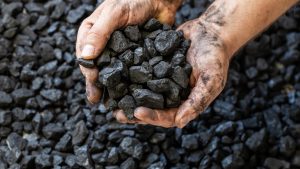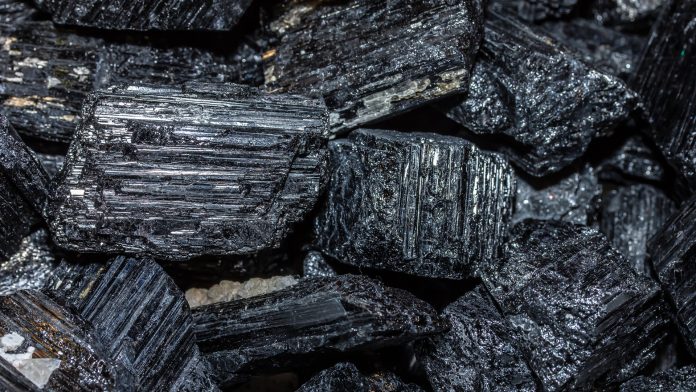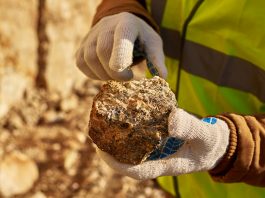Penn State’s Center for Critical Minerals has developed a new purification process that extracts mixed rare earth element oxides from acid mine drainage.
Critical minerals, including rare earth elements, are essential to the US’ economy and national security as they are used in a variety of everyday applications. Due to their necessity, researchers are looking for new ways to extract these metals to ensure that supply is guaranteed. Now, researchers from Penn State’s Center for Critical Minerals have developed a new purification process that extracts rare earth oxides from acid mine drainage and associated sludges at purities of 88.5%
The findings, titled ‘Selective recovery of high-grade rare earth, Al, and Co-Mn from acid mine drainage treatment sludge material,’ were published in Minerals Engineering.
What are rare earth elements and how can they be extracted?
Critical minerals, including the 17 rare earth elements, are used in many common household products like smartphones and computers, and in applications essential to the clean energy transition, such as electric vehicles, batteries, and solar panels. Demand for these metals has increased due to their high economic importance, and high supply risk, and subsequently, their absence would have significant consequences on the economic and national security of the US.
The US needs to ensure that a supply of these minerals is secured, and therefore needs to look at extracting these minerals domestically. Acid mine drainage (AMD) and associated solids and precipitates resulting from AMD treatment have been found to be viable sources of multiple critical minerals and rare earth elements.
The U.S. Department of Energy (DOE) is exploring this further and has funded efforts to demonstrate both the technical feasibility and economic viability of extracting, separating, and recovering REEs and CMs from US coal and coal by-product sources, with the goal of achieving mixed rare earth oxides from coal-based resources with minimum purities of 75%.
“We have been working to develop strategies to recover CMs and REEs from these waste streams and have achieved a milestone of 88.5% grade REEs,” said Sarma Pisupati, Professor of Energy and Mineral Engineering and Director of the Center for Critical Minerals at Penn State. “The current target set by the DOE for achieving mixed rare earth oxides is 75% and we have surpassed that target.”

Previous AMD treatment processes
The researchers obtained acid mine drainage and associated sludge material representing the Lower Kittanning coal bed and evaluated the recovery of multiple critical minerals. A new purification process based on a previous AMD treatment process was then designed to recover high-grade aluminium, rare earth elements, cobalt, and manganese products from the sludge
“The extraction of REEs and CMs directly from AMD eliminates the need for the dissolution of sludge and associated costs of reagents and processing, resulting in more sustainable waste disposal practices with low cost,” said Mohammad Rezaee, Assistant Professor of Mining Engineering at Penn State and co-author on the study.
“We have demonstrated that we are able to turn these waste streams, which have been of environmental concerns for decades, into valuable resources, so this is a win-win for the environment, the commonwealth, and the nation.”
Usually, AMD is treated by adding lime or other chemicals to raise the pH to 7. However, the researchers changed this in their new process.
“Typically, AMD is neutralised through the addition of various alkaline chemicals,” said Rezaee. “As the pH of the AMD increases during the treatment process, metals precipitate as metal hydroxides or other complexes.”
The new AMD system to extract rare earth element oxides
In the new system developed by the researchers, the pH is still raised to 7, but this is done in stages.
“Instead of adding sodium hydroxide, calcium hydroxide, or lime all at once to raise the pH, we are raising it in stages,” said Pisupati. “The advantage of this method is that it allows certain minerals to precipitate out at different pH levels. If we add in our base all at once and bring the pH to 7, all these things will precipitate at the same time. Then we would need to go back and separate them.”
The pH was raised to the level needed for iron to precipitate, and then to the pH needed for aluminium to precipitate. After this precipitation, rare earths and then recovered through carbonate precipitation.
“Our challenge was that we could not get 100% of the iron and aluminium removed; there was a little bit of residue in the REE concentration,” said Pisupati. “Even if you have only 1% of aluminium content in the mixture it dominates, and your quality of rare earths will not be as pure. This was addressed in the new purification process.”
The precipitates that were removed are then put back through the cycle in the purification process to remove iron, aluminium, and other residues.
“In the purification process, we go through the cycle all over again, going back to a pH of 3 or 3.5 and starting all over,” said Pisupati. “We are getting rid of the other residues slowly, maybe two times or three times through the cycle, to increase the REE purity. In our previous research, we were at about 17% to 18% grade, so this is a significant accomplishment.”
Purity of the recovered minerals
For the target elements, recoveries of more than 99% were achieved with the design of a recycling load. In the previous AMD process, the cobalt and manganese precipitates had a concentration of 0.85% and 23%, respectively. The new purification process increased their concentrations to 1.3% and 43%.









